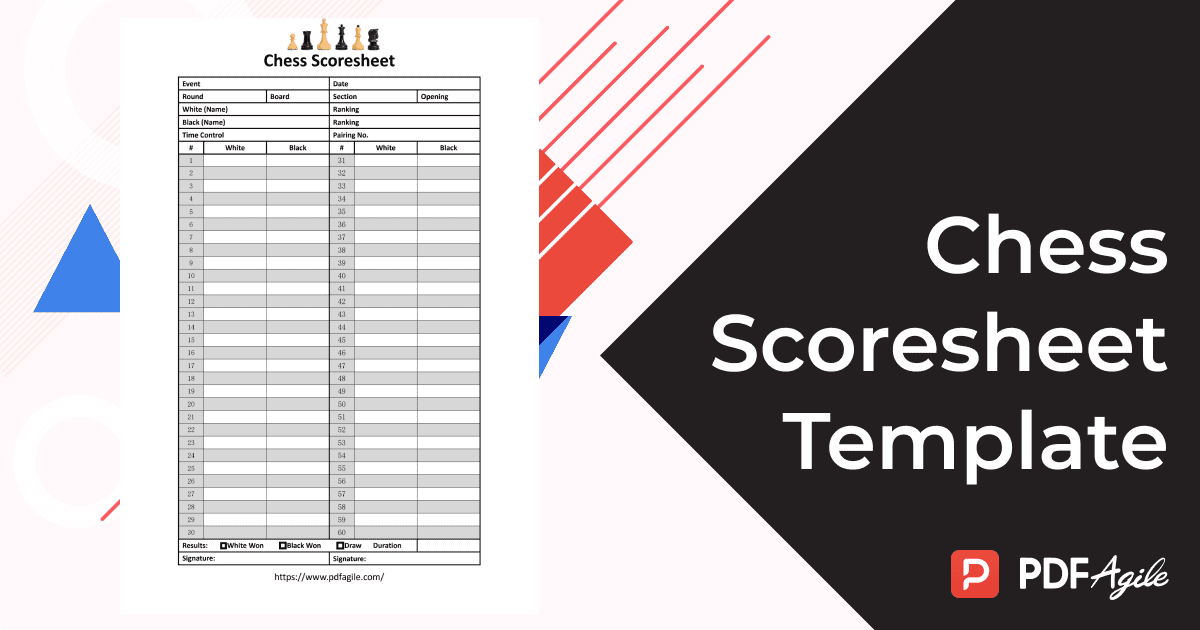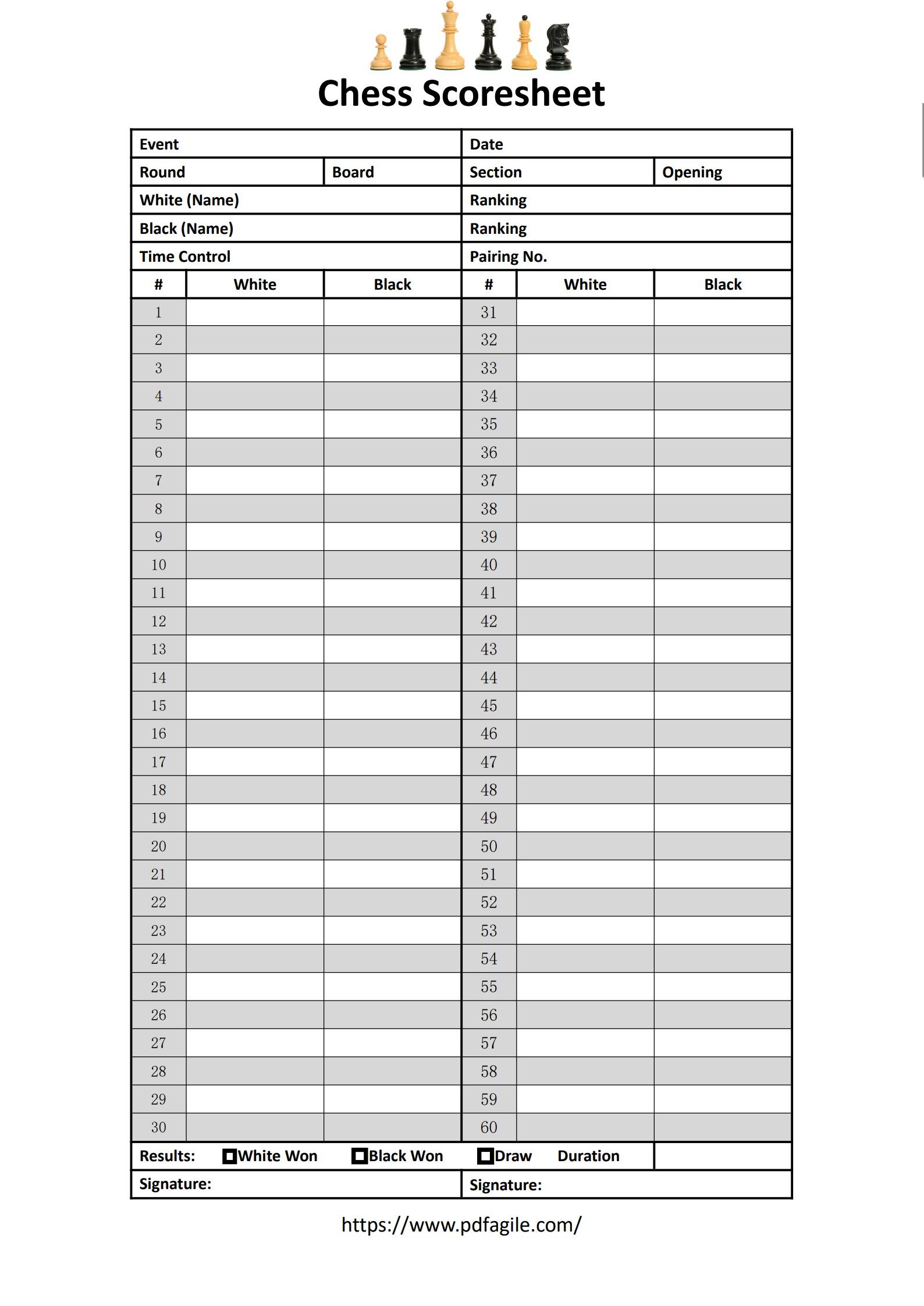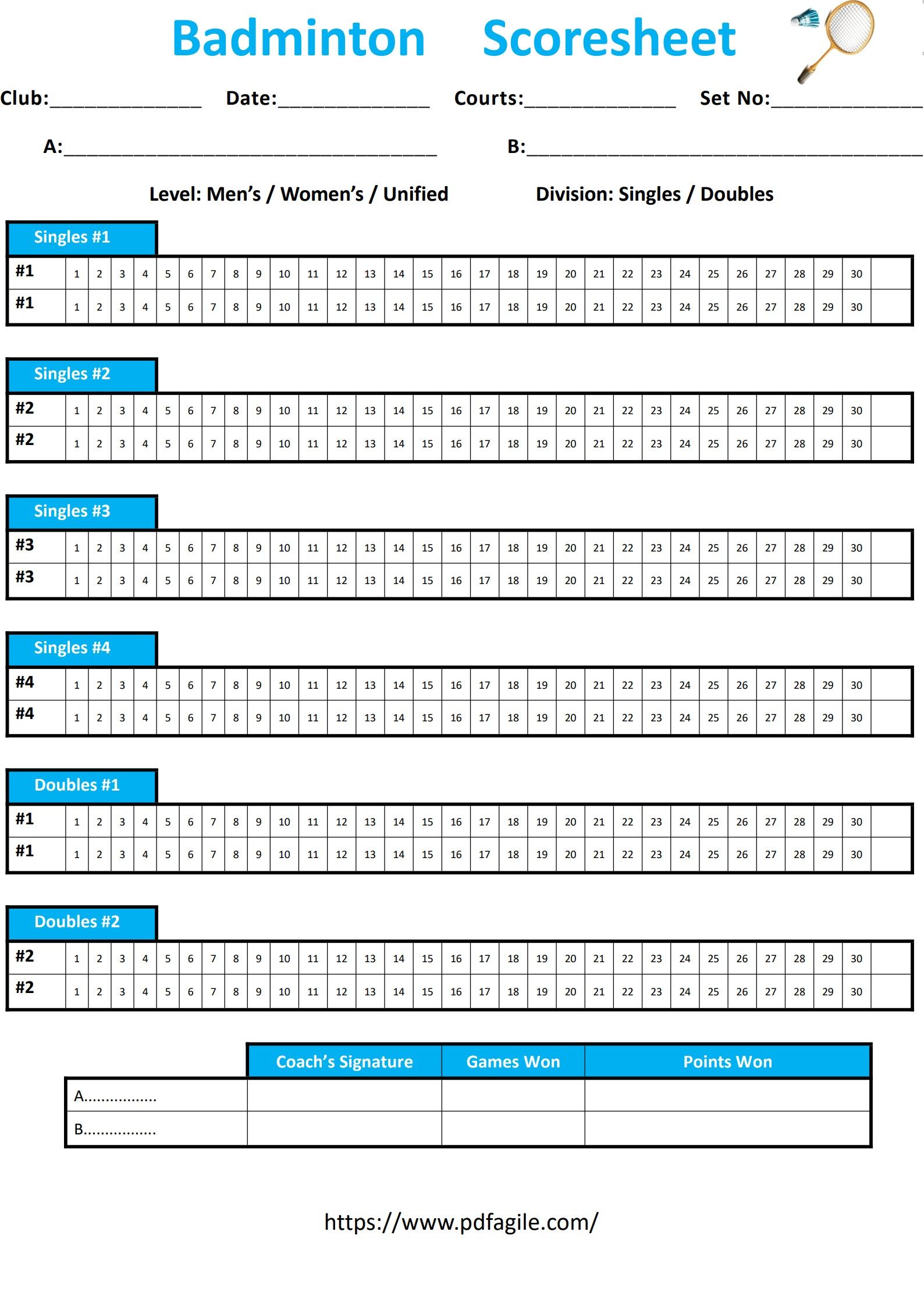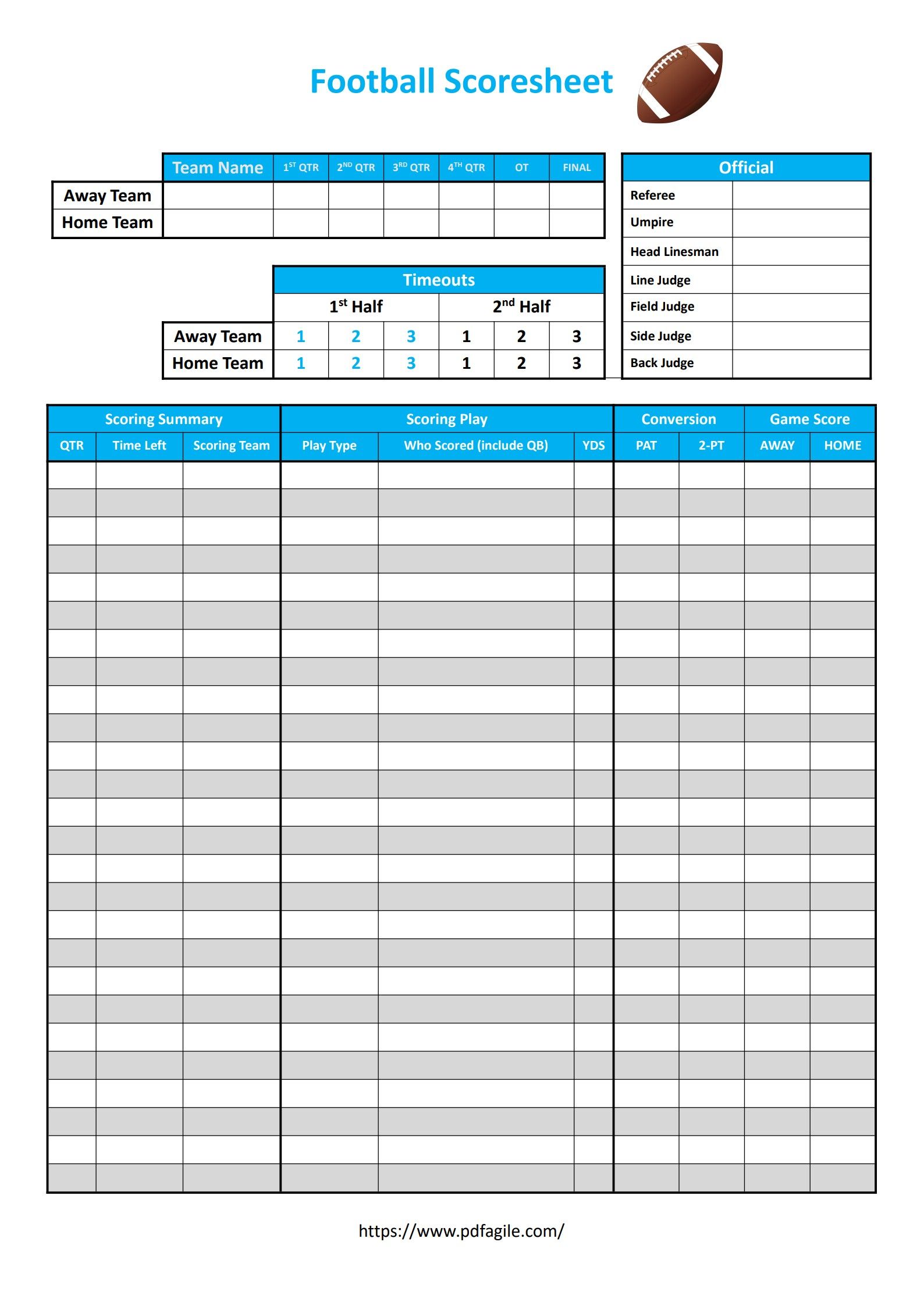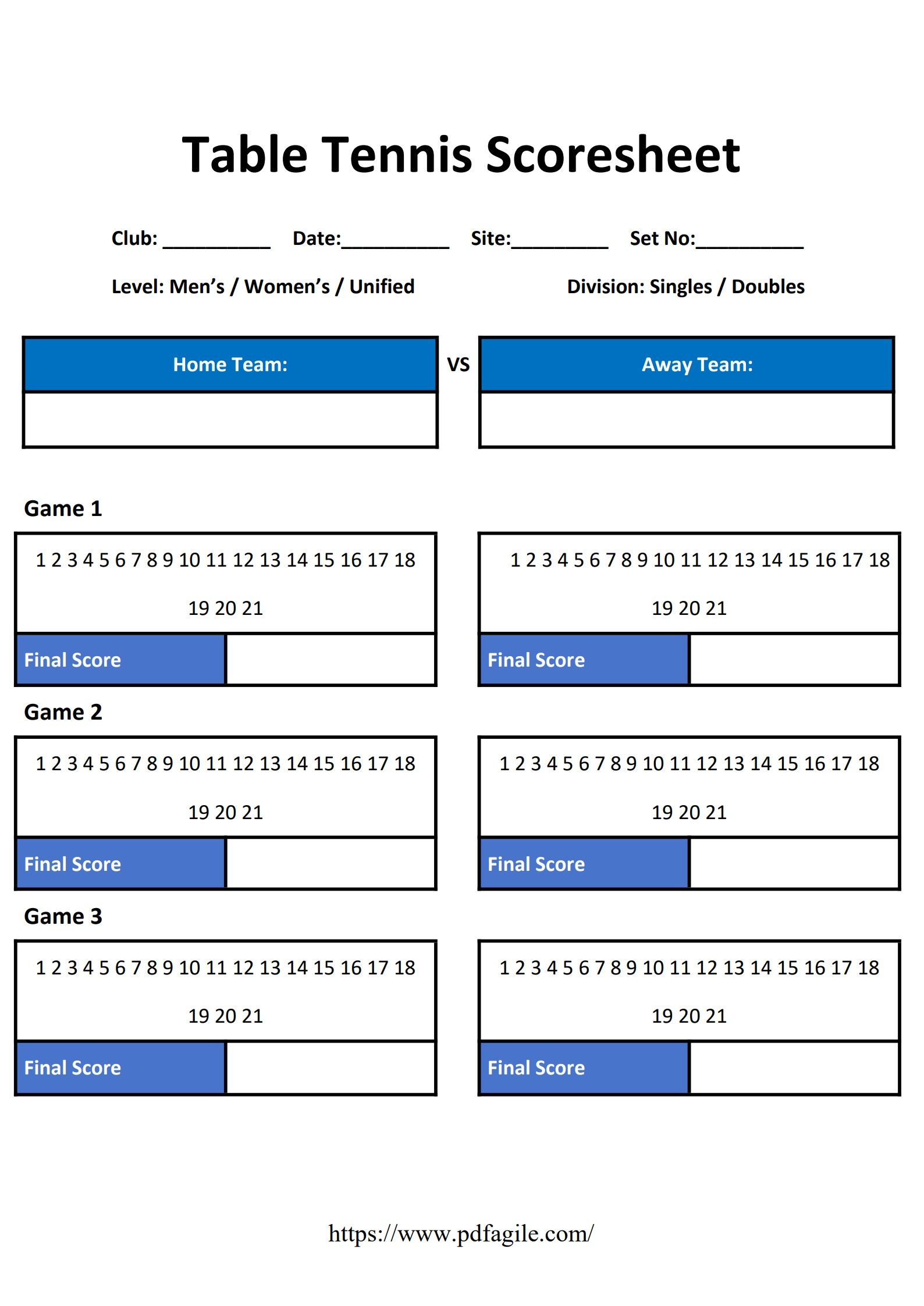The fog of war... but on a checkered battlefield! Chess, a game of strategy and cunning, unfolds move by calculated move. Yet, amidst the captured pieces and brilliant sacrifices, a silent partner stands guard: the chess scoresheet. It's more than just a piece of paper; it's the chronicler of your strategic genius, a safeguard against memory lapses, and a gateway to future improvement.
This guide delves into the world of chess scorekeeping, transforming you from a bewildered beginner to a confident scorekeeper. We'll explore not only the "what" and "why" of scoresheets, but also equip you with the "how" - a step-by-step approach to ensure every move, every capture, every checkmate is meticulously documented. So, whether you're a seasoned player or a curious newcomer, this guide is your key to unlocking the full potential of the chess scoresheet.
What is a Chess Scoresheet?
In the cerebral world of chess, every move carries weight. But how do you ensure these strategic decisions are accurately documented for future reference or post-game analysis? Enter the chess scoresheet – a silent chronicler of these intellectual battles.
A chess scoresheet is more than just a piece of paper; it's a vital tool that serves several key functions:
- Record Keeper: The scoresheet acts as a permanent record of the game's flow. It captures the sequence of moves played by both sides, allowing players to revisit the game later and analyze their strategies, successes, and missed opportunities.
- Accuracy Enforcer: During lengthy games with complex sequences of moves, memory can be unreliable. The scoresheet eliminates confusion and ensures both players are on the same page regarding the game's progression, preventing disputes over forgotten captures or unclear piece movements.
- Learning Tool: By reviewing the recorded moves, players can identify areas for improvement. They can analyze their opponent's strategies, learn from past mistakes, and discover new tactical concepts employed during the game.
- Tournament Necessity: In official chess tournaments, a scoresheet is mandatory. It ensures fair play by providing a clear record of the game for the arbiter (tournament official) and allows for accurate tracking of the game's progress, time control usage, and ultimately, the final result.
The chess scoresheet, with its simple format, plays a crucial role in preserving the intellectual battles fought on the chessboard. It's a testament to the strategic depth of the game and a valuable tool for players of all levels to learn, improve, and appreciate the beauty of chess.
Benefits of Using a Chess Scoresheet
Chess is a mental marathon, demanding strategic thinking and meticulous planning. Here's how a chess scoresheet becomes your loyal companion, enhancing your chess journey:
- A Fortress Against Mistakes: Lengthy games with complex move sequences can lead to memory lapses. A scoresheet acts as a reliable record, preventing confusion about past moves and ensuring accurate game reconstruction for later analysis.
- A Treasure Trove of Knowledge: Every game is a learning experience. The scoresheet becomes a personal archive, allowing you to revisit past games, analyze your moves and your opponent's strategies, and identify areas for improvement. Imagine reviewing a brilliant checkmate you delivered or dissecting a missed opportunity – the scoresheet unlocks valuable insights for future battles on the chessboard.
- A Tool for Self-Reflection: Beyond technical aspects, chess is a mental game. Reviewing your scoresheet allows you to assess your decision-making process during the game. Did you succumb to time pressure? Did you miss a tactical opportunity? The scoresheet becomes a mirror for self-reflection, helping you develop mental fortitude and strategic composure.
- A Source of Bragging Rights: Let's face it, winning feels good! The scoresheet becomes a tangible record of your victories, a testament to your strategic prowess. However, even losses can be valuable learning experiences. Analyze close games to understand where you went wrong, and use the scoresheet as a stepping stone for future improvement.
- A Tournament Essential: In official chess tournaments, a scoresheet is not just helpful – it's mandatory. It provides a clear and official record of the game for both players, the arbiter, and future reference.
By embracing the benefits of a chess scoresheet, you elevate your game beyond the physical chessboard. It becomes a tool for learning, a testament to your skills, and a valuable companion on your chess-playing journey.
Chess Scoresheet Basic Format: A Clear Map for Your Chess Journey
A well-organized chess scoresheet is like a map for your chess journey. It not only tracks the moves played but also serves as a valuable tool for later review and analysis. Here's a breakdown of the key components you'll find on a chess scoresheet:
- Player Names Section: This section sits prominently at the top, clearly identifying the two players engaged in the battle of wits. Write down the full names or agreed-upon aliases for both White and Black.
- Move Notation Section: This is the heart of the scoresheet, where the story of the game unfolds move by move. Most sheets feature a grid or table with enough space to record all the moves comfortably. Here's what you'll typically find:
- Move Numbers: Each row is usually numbered consecutively, corresponding to the move order in the game (1. e4, 2. Nf3, etc.).
- Algebraic Notation: This standardized system uses letters and numbers to represent the origin and destination squares of each piece (e.g., e4 for moving the king's pawn two squares forward, Nf3 for moving the knight to the f3 square, etc.). Familiarize yourself with algebraic notation for accurate recording.
- Result Section: Once the game concludes, this section clearly reflects the final outcome. Common notations include "1-0" (White Wins), "0-1" (Black Wins), or "½-½" (Draw).
- Date & Time Section: Located at the top or bottom of the sheet, this section allows you to record the date and time the game took place. While not essential for casual games, it becomes crucial for tournaments or games you want to revisit later.
Optional Sections:
- Clock Time Section: If playing a timed game, some score sheets offer dedicated sections to track the remaining time for each player. This helps visualize the time pressure and potentially analyze how time constraints influenced decision-making.
- Diagram Section: For particularly complex positions or sacrifices, some sheets offer a small diagram section. Sketching the board layout at that specific point in the game can be incredibly helpful for later review and understanding.
How to Use a Chess Scoresheet?
Chess is a mental marathon, demanding focus and strategy. A chess scoresheet acts as your trusty companion, documenting the battle on the board. Here's how to use it effectively, ensuring every brilliant move is captured for posterity:
Before the Game:
- Designate a Scorekeeper: Decide if one player will handle both playing and recording moves (common in casual games), or if a separate person will act as the scorekeeper.
- Know the Layout: Familiarize yourself with the chess scoresheet format. Locate sections for player names, move notation, result, and date, time, and clock times.
- Name It Right: Clearly write down both player names in the designated section.
During the Game:
- Move, Then Note: After completing your move on the board, clearly record it in the move notation section using algebraic notation. This standard system uses letters and numbers to represent pieces and squares, ensuring everyone understands the move sequence.
- Double Duty: If you're the designated scorekeeper, wait for your opponent to finish recording their move before making yours. This allows for verification and avoids confusion.
- Communicate Clearly: If unsure about a move or notation, politely ask your opponent for clarification. Clear communication ensures both players are on the same page.
After the Game:
- Victory or Draw: Once the game concludes, record the final result in the designated section. Did you emerge victorious (White Wins/Black Wins), or did the battle end in a strategic stalemate (Draw)?
- Bonus Tip: Consider using arrows or symbols to indicate special moves like castling or en passant. These symbols can enhance clarity when reviewing the game later and add a touch of personality to your scoresheet.
Tips for Using a Chess Scoresheet
The chessboard is a battleground of strategy, and your scoresheet is your trusty war journal. Here are some tips to ensure it captures every move accurately and keeps you focused on the game:
- Master the Language: Familiarize yourself with algebraic notation, the standard system for recording chess moves. This allows for clear and concise documentation of every maneuver on the board.
- Double Time for Accuracy: Don't let the intensity of the game cloud your judgment! After each move, take a quick moment to review your notation. Double-check that the symbol and number accurately reflect the piece moved and its destination square.
- Communication is Key: Chess can involve complex situations and tricky maneuvers. If unsure about a move or its notation, don't hesitate to communicate with your opponent. Clear communication ensures everyone's on the same page and avoids confusion later.
- Visualize for Clarity: Consider using arrows or symbols to highlight special moves like castling () or en passant (e.p.). These visual cues can enhance clarity, especially when reviewing the game later and analyzing positional changes.
- Pen it Down for Permanence: Opt for a pen over a pencil. Chess games can be long and intense, and accidental smudges or erasures can be frustrating. A pen provides a permanent record and keeps your scoresheet neat and professional-looking.
- Focus on the Game, Not Just the Sheet: Remember, the scoresheet is a tool to enhance your chess experience. While accurate recording is important, don't get bogged down in details and miss the beauty of the unfolding strategies on the board. Enjoy the game, learn from each move, and use the scoresheet as a valuable post-game analysis tool.
Free Download: Printable Chess Scoresheet Template
To help you get started, we have created a free, printable chess scoresheet template. You can download the template by clicking the Use Template button on this page.
You can also explore more scoresheet PDF templates in PDF Agile Templates Center.
